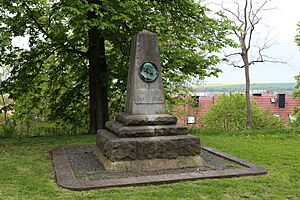Friedrich Traugott Kützing facts for kids
Quick facts for kids
Friedrich Traugott Kützing
|
|
|---|---|
| Born | December 8, 1807 Ritteburg
|
| Died | September 9, 1893 (aged 85) |
| Nationality | German |
| Known for | Significant scientific contributions |
| Scientific career | |
| Fields | Pharmacy, botany and phycology |
Friedrich Traugott Kützing (born December 8, 1807, in Ritteburg – died September 9, 1893) was an important German scientist. He worked as a pharmacist, someone who prepares medicines. He was also a botanist, studying plants, and a phycologist, specializing in algae.
Even though Kützing didn't have a lot of formal university training, he made big discoveries. In 1833, he showed how two tiny plant groups, diatoms and desmids, were different. He then put them into their own separate families. He also helped figure out how yeast works in fermentation, which is how things like bread and beer are made. Other scientists like Charles Cagniard-Latour and Theodor Schwann were working on this too.
In 1849, Kützing published a huge book called Species Algarum. This book described 6,000 different types of algae. He also named some groups of plants, like Syringodium (a type of seagrass) and Phlebothamnion (a type of red algae).
Early Life and Learning
When Kützing was young, he worked in different pharmacies across Germany. He also spent some time helping out at a special chemical and pharmacy institute. This was at the University of Halle, where he assisted Franz Wilhelm Schweigger-Seidel.
His Career as a Scientist
In 1835, Kützing went on a trip to study plants in Italy and Dalmatia. After this trip, he came back to Germany. He became a high school teacher for natural sciences in Nordhausen. He kept this job until he retired in 1883.
His hard work was recognized. In 1837, the University of Giessen gave him an honorary doctorate. This is a special degree given to people who have achieved great things. In 1843, he was given the title of professor.


